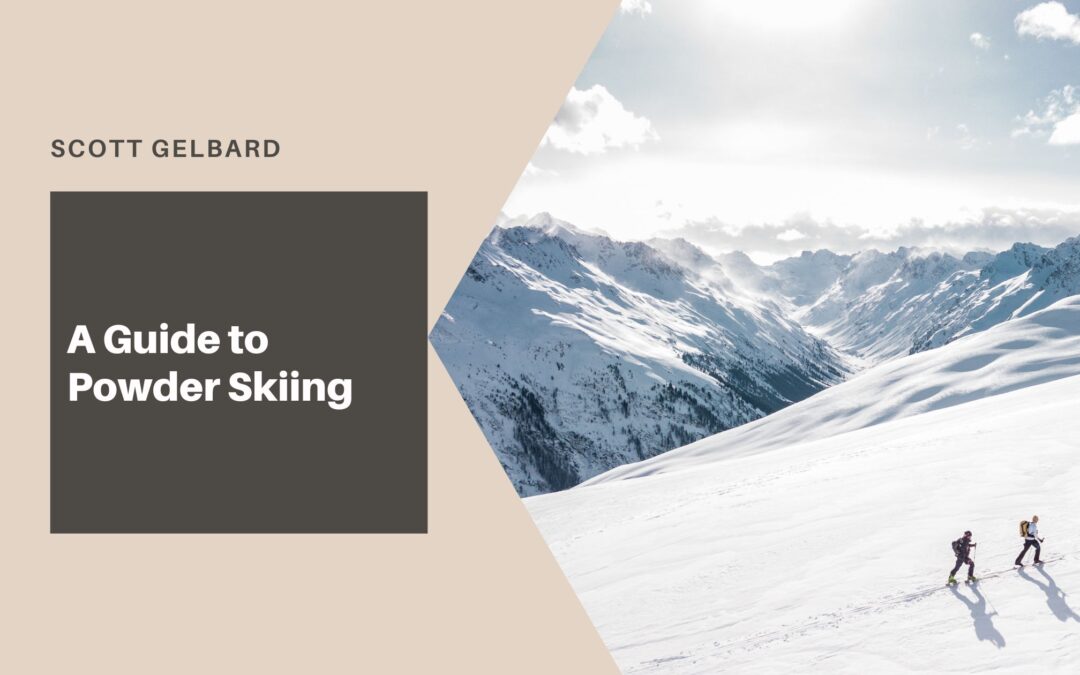Powder skiing, a thrilling and much-coveted aspect of the skiing world, offers a unique experience compared to traditional piste skiing. Gliding over fresh, untouched snow is an exhilarating feeling many skiers aspire to. However, powder skiing also demands specific skills, equipment, and safety knowledge. It’s a different realm where the snow’s softness changes the game’s rules.
Powder skiing is the act of skiing on un-groomed snow. Unlike the compacted snow on groomed trails, powder snow is soft, deep, and fluffy, providing a sensation often likened to floating. This form of skiing originated in the backcountry and off-piste areas of mountain ranges, where snowfall is abundant and untracked.
Historically, powder skiing was considered a pursuit for the elite or highly skilled skiers, requiring navigating through unpredictable terrain and conditions. However, advancements in ski technology and the increasing accessibility of remote areas have opened up powder skiing to a broader audience. Today, it’s a sought-after experience for many skiers, driven by the allure of carving turns in pristine snow and the tranquility of untouched natural landscapes.
Understanding the characteristics of powder snow is critical. Its low moisture content and fluffy texture make it vastly different from groomed snow. These conditions require other skiing techniques and equipment to ensure enjoyment and safety.
Equipment for Powder Skiing
The right equipment is essential for an optimal powder skiing experience. Powder skis are the most critical piece of equipment. They are more comprehensive than traditional alpine skis, which allows for better floatation in deep snow. Powder skis typically range from 100mm to 140mm in width underfoot. Their design often includes a rockered (upturned) tip and tail, facilitating easier turning and maneuverability in deep snow.
Besides skis, boots, and bindings are also important. Boots should balance flexibility for comfortable movement and stiffness for control. Bindings should be securely adjusted to the skier’s weight and ability, as powder skiing can involve more unpredictable forces than groomed trail skiing.
Additionally, safety equipment is crucial, considering the off-piste nature of powder skiing. A beacon, shovel, and probe are essential for avalanche safety, especially in backcountry areas. Helmets are a must for head protection, and goggles with the right lens can enhance visibility in varying light conditions typical of mountain environments.
Techniques for Powder Skiing
Mastering powder skiing techniques is vital for both enjoyment and safety. The critical difference in powder skiing technique compared to piste skiing lies in weight distribution.
Turning in powder requires a less aggressive approach than on groomed trails. Instead of sharp, edged turns, powder skiing is about gentle, rounded arcs. The skier should focus on using their whole body to steer, including shifting the hips and using arm movements for balance.
Maintaining a rhythm is also essential. Consistent, flowing movements help keep momentum, which is crucial for moving through heavy snow. Additionally, skiers should be prepared to adjust their stance and technique depending on the depth and condition of the powder, as well as the terrain.
Practicing in varying conditions and terrains can significantly enhance powder skiing skills. It helps us understand how to adapt techniques to different types of powder snow and slopes.
Safety in Powder Skiing
Safety is paramount in powder skiing, especially given the unpredictable nature of un-groomed terrain and the risk of avalanches. Before heading out, checking avalanche forecasts and being aware of current snow conditions is essential. Skiers should never venture into powder terrain without proper knowledge of avalanche safety.
Avalanche training courses are highly recommended. These courses teach how to read terrain, understand snowpack, and use safety equipment like beacons, shovels, and probes. Skiing with a partner is also an essential safety measure; never ski alone in powder terrain.
In addition to avalanche risks, skiers should be aware of other hazards, such as hidden rocks, tree wells, and sudden terrain changes. Good practice includes staying alert, skiing in control, and being prepared to stop or change direction suddenly.

